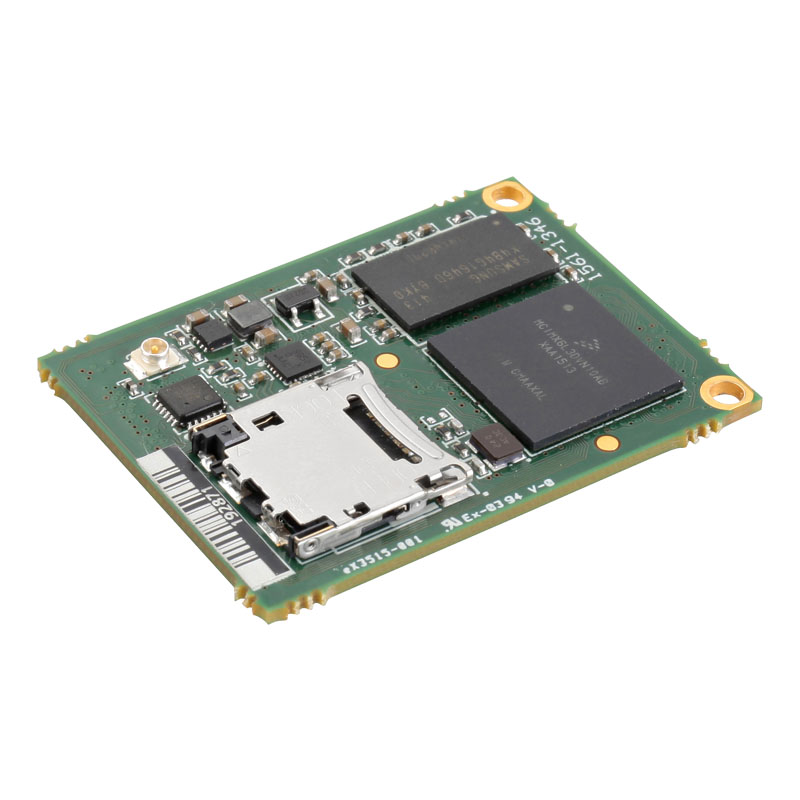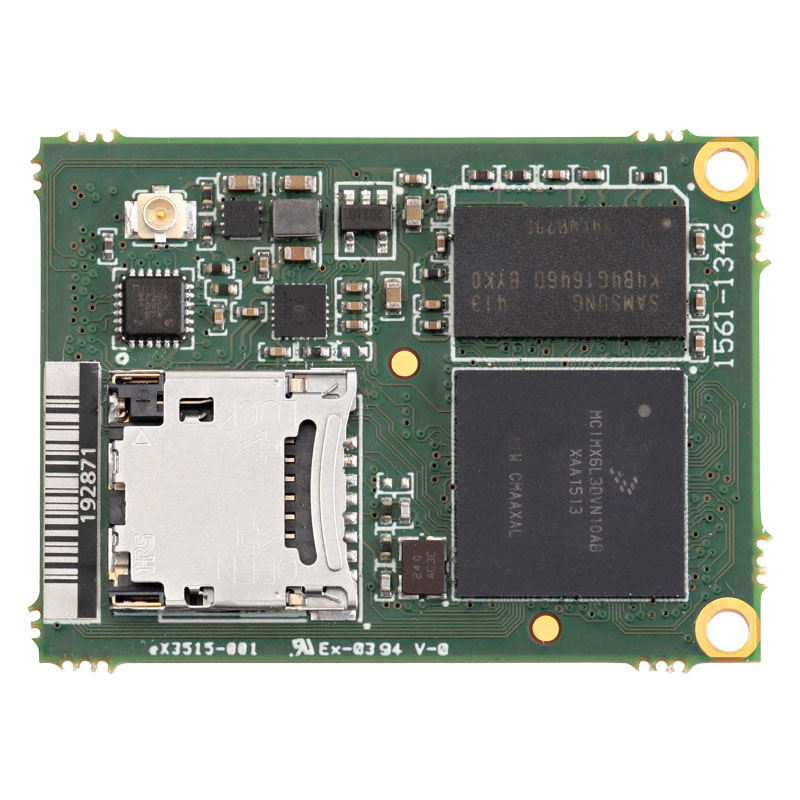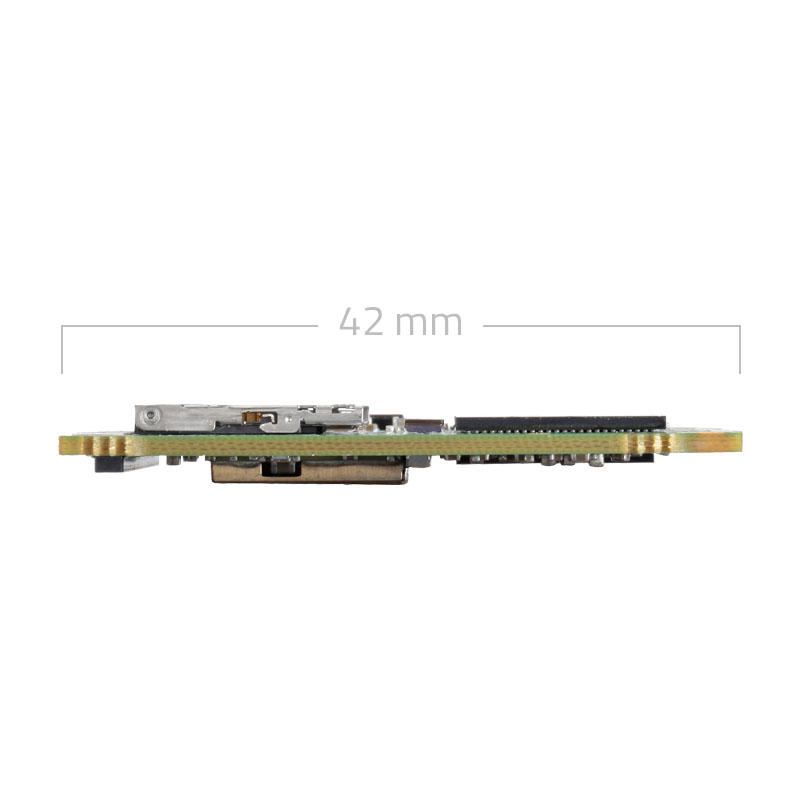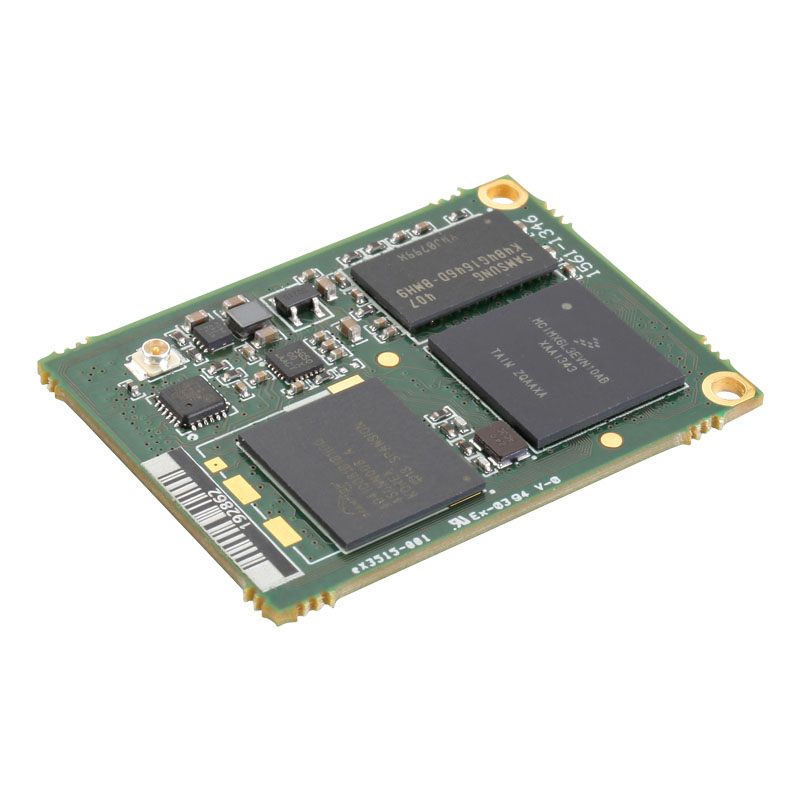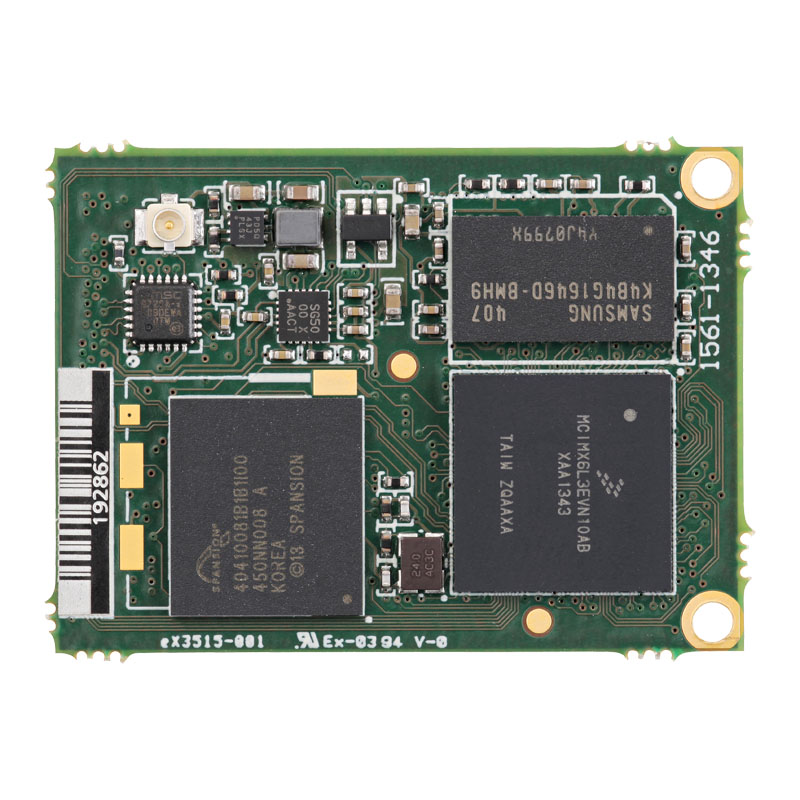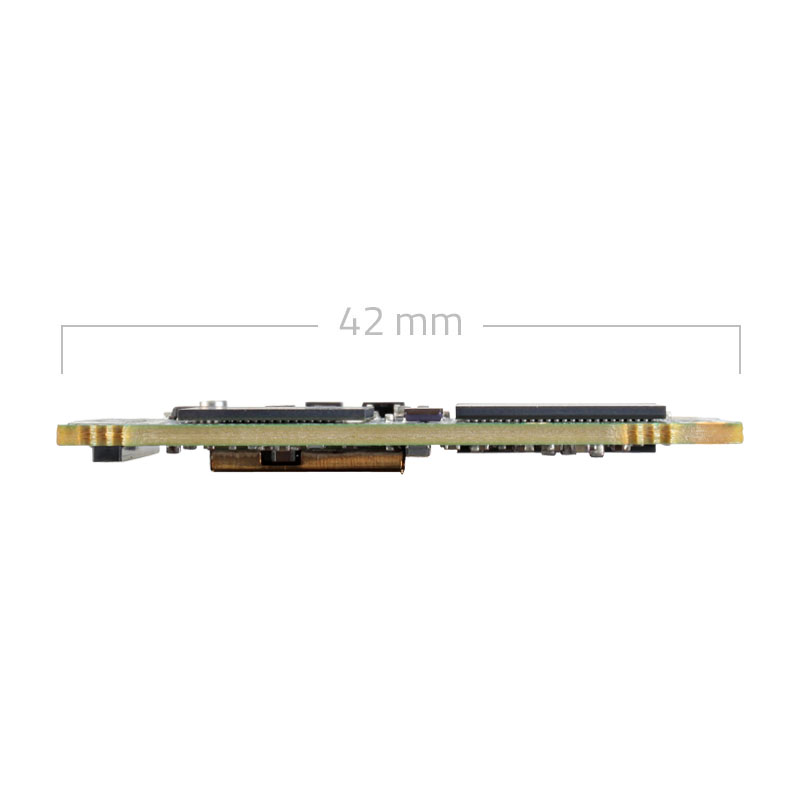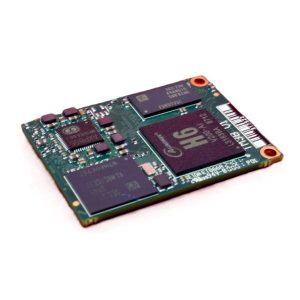Description
Our TM1 offers high performance, long life, low power consumption and low cost in a tiny module.
High Performance
The TM1 features a NXP iMX6 ARM Cortex A9 processing core with a flexible clocking scheme from 24MHz up to 1GHz. This flexibility makes the TM1 suitable for running high level operating systems like Ubuntu Linux and Android Lollipop, or running bare metal applications that only require lower performance and the lowest power consumption.
Low Power
Maximising battery life and reducing standby power requirements are often important requirements for a processor module. The TM1 is designed to operate from a 2.9 volts to 3.3. volt power supply making it ideally suited for battery operation. Dynamic frequency and voltage scaling (DVFS) are supported on the module to reduce power consumption wherever possible. TM1 also supports ultra low power states while retaining its memory contents.
Low Cost
The TM1 is designed to be low cost and be a true embedded platform with long life. TM1 uses a single high reliability connector to connect to your host board. The Wi-Fi and Bluetooth is implemented to reduce the cost of R&TTE testing. Typically only a four layer PCB is required for the carrier board thereby keeping the cost of your product as low as possible.
Long Life
The TM1 uses the NXP iMX6 processor which has a very long life. Our TM1 module family will be available for at least 10 years.
Small Form Factor
Measuring just 42mm x 30mm x 5.3 mm the TM1 is incredibly small and easy to integrate into the tightest enclosures.
Functionality
The TM1 is ideal for today and tomorrow’s product designs. It provides Wi-Fi (802.11 a/b/g/n 2.4Ghz & 5GHz), Bluetooth (4.1, BLE 4.0) and Ethernet together with an array of LCD, UART, USB Device, USB Host, SPI, I2C, SDIO, camera,I2S, S/PDIF and GPIO interfaces.
The TM1 excels in headless (no display) and LCD applications. If you are interested in the TM1 together with an LCD and bezel please check out our range of host boards and LCDs for the TM1 in our Beta section.
Technical Specifications
| CPU |
|---|
| CPU Manufacturer | NXP/Freescale
|
|---|
| CPU Series | ARM Cortex™ A9
|
|---|
| CPU Speed | 1.0GHz
|
|---|
| CPU Details | Floating Point Unit
L2 Cache
NEON
|
|---|
| CPU Cores | Single Core
|
|---|
| Memory |
|---|
| RAM | 1GB
|
|---|
| Connectivity |
|---|
| Inputs / Outputs | GPIO
|
|---|
| RF Comms | Bluetooth 4.0
Bluetooth BLE
Wi-Fi 802.11 abgn
Wi-Fi 802.11 bg
|
|---|
| Serial Comms | Ethernet 10/100
I2C
RS232
RS422
RS485
SPI
USB 1.1
USB 2.0
|
|---|
| Audio / Visual |
|---|
| Audio | Analog Audio Headphone Out
Analog Audio Line In
Analog Audio Line Out
Analog Audio Mic In
Digital Audio
|
|---|
| Graphics | 2D Acceleration
Camera Parallel Interface
Graphics Controller
Video Decoder
Video Encoder
|
|---|
| Miscellanneous |
|---|
| Operating System | Android
Linux - Ubuntu
|
|---|
| Temperature | -10° to +70° C
-20° to +70° C
-20° to +85° C
-40° to +85° C
0° to 60° C
0° to 70° C
|
|---|
| Power Supply | 3.0 Volts DC
3.3 Volts DC
|
|---|
See datasheet for more detailed information.
Download Datasheet
Downloads
Documentation
| File Name | Description | Download |
|---|
| RS485 Application Note | Application note for the use of RS485 on a TM1 / TM3 / XE1 |
508.79 KB |
|---|
| HB6 Technical User Guide | Technical User Guide for the HB6 carrier board (for TM computer-on-modules). |
3.69 MB |
|---|
| Linux User Guide for TM1 / HB5 | User Guide for building Linux operating systems on the TM1 computer-on-module and HB5 hostboard platform. |
2.82 MB |
|---|
| TM1 Datasheet | Datasheet for TM computer-on-module. |
491.10 KB |
|---|
| TM1 Pin Out Options | iMX6 Pin out Reference for the TM1 in Microsoft Excel format |
17.89 KB |
|---|
| HB5 Datasheet | Datasheet for the HB5 hostboard (for TM computer-on-modules). |
897.91 KB |
|---|
| HB5 Technical User Guide | Technical User Guide for the HB5 hostboard (for TM computer-on-modules). |
2.36 MB |
|---|
| Android for TM1 User Manual | User Guide for Android running on the TM1 computer-on-module. It provides the necessary information required to starting building Android applications. |
1.63 MB |
|---|
Software
| File Name | Description | Download |
|---|
| Firmware Update Utility (Linux & Android) for TM1 + HB carrier boards | Firmware update utility to run on Windows PC to load Linux & Android binaries onto TM1 + HB5/6/7/etc. |
1.04 GB |
|---|
| Embedded Linux SDK for TM1 + HB Carrier Boards | Linux SDK for the TM1 and HB5/6/etc. |
7.31 GB |
|---|
| Embedded Linux Virtual Machine for TM1 + HB Carrier Boards | Virtual Machine for Linux on the TM1 and HB5/6/etc. |
19.18 GB |
|---|
| Android APIs for TM1 | Android APIs for the TM1 system-on-module. |
16.70 MB |
|---|
Designs
| File Name | Description | Download |
|---|
| TM1 Dimensions | Dimensions of the TM1 computer-on-module. |
23.74 KB |
|---|
| HB5 Reference Design for TM1 | Reference schematics for the HB5 hostboard (for TM system-on-modules). |
450.45 KB |
|---|
Looking for something else?
Request a File
